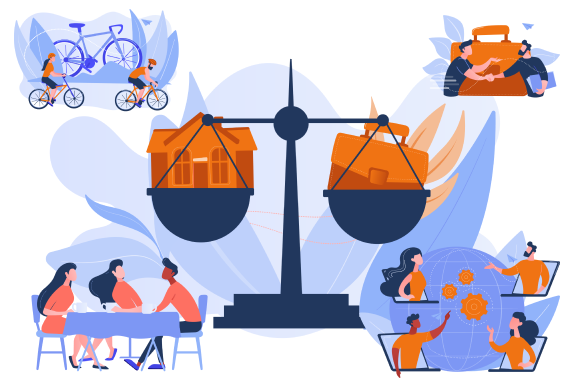Smart city – 3 essential technologies
Smart cities are built using the internet of things (IoT), geographic information systems (GIS) and big data.
The internet of things uses sensors, visibility devices, and chips that are embedded in electronic devices and other physical objects. In a smart city, you can find millions of such devices transmitting information. At this scale, a government can collect diverse information and use it to improve the city’s infrastructure.
A geographic information system is a system that lets a government capture, store, and visualize data related to detailed geolocation. It shows the position of greenery, buildings, streets and other objects. With the use of geolocation data, the government can analyze and optimize water distribution or the city’s infrastructure, or even reduce pollution.
Big data gives cities the possibility to analyze large amounts of granular and aggregated datasets. Data comes from many sources, like public transportation systems; real-time updates on free parking spots, smart lightning or public wi-fi network usage.
Smart city – what does it mean?
Cities have been rapidly changing in recent years; the way you drive, purchase goods, and access media for your household are all influenced by technology.
A smart city uses data and technology to improve interactions and the efficiency of urban structures.
Smart cities contribute to:
economic growth
better urban planning and infrastructure
development of human capital
increasing mobility and transportation
development of technology
better sewage and safety management
Why do governments invest in so many areas? And why do they buy ready-to-use solutions from tech companies? Because urbanization is a growing trend and all the investments will pay off in the future.
According to the United Nations, 55% of the world’s population lives in urban areas, a number that will grow to nearly 70% in the future. To handle the influx of citizens to urban areas, many cities plan urbanization ahead of time. Another issue is today’s crisis; the United Nations’ report states that cities and technology hubs are key to recover from the pandemic. Therefore, cities have to be smarter and better-suited for their citizens.
Who contributes to building smart cities and what are the benefits?
Governments don’t transform cities solely with their own hands, they partner with various companies, each specializing in a different field. They may buy sensors from one partner and cameras from another. They may partner with tech companies that provide smart devices and dedicated applications. Or they may partner with companies that offer cloud solutions. Even with data analysis, governments may also hire external consultants to get reliable results.
As for these results, the return from the investment is usually easily visible and worth the effort.
These are the most popular benefits of a smart city:
citizens settle down for a long time
attracts foreign companies, investors and international conferences
everyone benefits from better connections, mobility, sewage removal and safety
the government becomes better able to predict how to control infectious disease
governments save billions of dollars and can invest money in new projects
Examples of smart cities
Here are the top three smart cities according to the IESE Cities in Motion Index (CIMI):
London in the United Kingdom
London received a score of 100/100 in the CIMI ranking. London is home to the world’s greatest companies and business schools. Its universities are among the top 500 around the world.
The capital of the United Kingdom has drones that explore inefficiencies in the common areas. The city’s lighting system is also rechargeable, which saves many pounds.
With innovative transportation and infrastructure, this city is thought to be a great place to live.
New York in the United States
New York City scored 95.73/100 in the CIMI ranking and took second place. What makes it so smart? New York’s government introduced real-time utility monitoring, innovative solutions for water purification and better traffic systems.
The government also engages drones to monitor aerial systems. The city attracts investors and publicly traded companies, for which it is home to many headquarter locations.
The swarm of skyscrapers also positions this city on top in terms of infrastructure development while the sewage monitoring helps the city government optimize garbage collection.
Paris in France
Paris got 85.5/100 points and received a bronze medal in the CIMI ranking. It attracts not only tourists but foreign investors and international corporations. Similarly to London, with a number of hotels, Paris hosts many international congresses.
With the internet of things technology, the Paris government optimizes the flow of people and vehicles in the city. Additionally, the city has great mobility and transportation and renewable energy. Similarly to London and New York, it’s a great place to find good quality living.
Do you have an idea for making a city smarter?
If you want to employ the internet of things, big data, or other technology to build a smart solution, contact us. If you’re interested in a real-life example, read our case study to see how Oakfusion helped build a unique device for measuring air quality.












